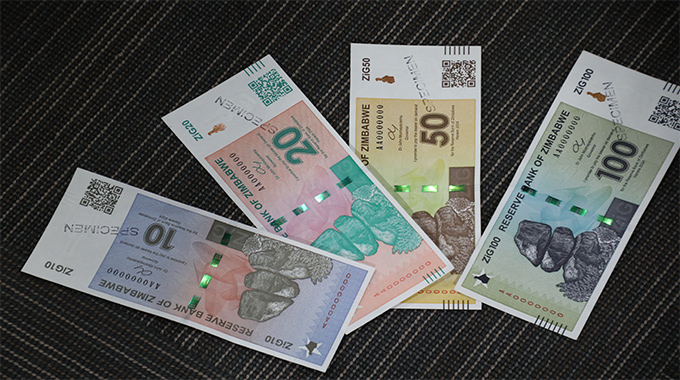Editorial Comment: Adoption of RISR milestone for Sadc

 TEN Sadc Heads of State and Government are in Harare today for an extra-ordinary summit called to discuss a very important matter as the regional bloc intensifies efforts to attain greater economic independence.Sadc’s 15 member states, as indeed all African countries except one, attained political independence from European colonialists, and for South Africa, freedom from an apartheid system enforced by “local” whites of Dutch ancestry. Saharawi Arab Democratic Republic is the only African country that is not independent yet as Morocco disputes that territory’s sovereignty.
TEN Sadc Heads of State and Government are in Harare today for an extra-ordinary summit called to discuss a very important matter as the regional bloc intensifies efforts to attain greater economic independence.Sadc’s 15 member states, as indeed all African countries except one, attained political independence from European colonialists, and for South Africa, freedom from an apartheid system enforced by “local” whites of Dutch ancestry. Saharawi Arab Democratic Republic is the only African country that is not independent yet as Morocco disputes that territory’s sovereignty.
Sadc countries fly flags and sing national anthems that flaunt their heroic fights against foreign or minority domination and the political freedom that the wars brought about but the region is still under foreign domination economically. The former colonial masters still hold economic sway over Sadc countries.
We have not yet weaned ourselves off the pre-independence economic structure that took colonies as sources of cheap raw materials that were carted off for value addition and beneficiation in Europe and America. The same products would, and still do, be transported back to Sadc and Africa as processed goods that cost up to 10 times the original prices.
So Sadc decided to craft the Regional Industrialisation Strategy and Roadmap (RISR), an industrialisation and value addition strategy to correct that historical circumstance.
The Sadc Council of Ministers adopted the draft RISR on Monday. It will be presented before regional heads today for consideration and possible adoption.
This follows the adoption by Sadc of the industrial development framework at the region’s 34th summit in Victoria Falls, Zimbabwe, in August last year and their order for the relevant ministers to develop a roadmap and strategy document on how to implement the framework. They mandated the ministerial task force on regional economic integration, which is made up of ministers of trade and industry, finance, economic planning and infrastructure development to meet by February 2015 and agree on the strategy and roadmap for the industrialisation of the region.
By and large, the February target has been met and we are happy with the speed at which the industrialisation effort is going.
It is a bold plan to assert the region’s independence in a more holistic manner. It looks at agro-processing, manufacturing and minerals processing in a region blessed with one of the world’s highest concentrations of high-value minerals, including rare ones only found here.
Sadc Council of Ministers chairman and Foreign Affairs Minister Simbarashe Mumbengegwi said:
‘‘The areas that the strategy will look at are related to the whole question of agro-processing. As you know, the bulk of our products are exported in their raw form and we get little returns from them. The idea is that the processing should be done in the region. The idea to process them locally is so that not only will we be able to access the finished product at a reasonable price, but we will also be able to get better returns from exporting them.”
The plan is achievable in that it does not assume that industrialisation will happen simply because Sadc wants it to. To that end, the RISR highlights a few pre-conditions to drive the plan forward. They include the need for relevant skills in member countries, adequate energy and infrastructure and political stability. These are imperatives that can make or break any plan.
If approved, it would take effect immediately and run until 2063. On that timeline, we are confident that 48 years is long enough to turn around an economy.
China, for example, rose from the status of a poor country around 1978 to that of the second biggest economy in the world by around 2000, that is within 20 years or so. Of course there are idiosyncratic factors influencing economic growth and development, but 48 years should be good for Sadc.
On funding the RISR asserts a win-win, investment-driven mechanism, as opposed to the inherently disabling aid-driven one that is widely discredited as having contributed to African poverty and economic stagnation.
Zimbabwe played a huge role in the crafting of the plan. That is very clear from its general thrust and some of its principles. It echoes Zimbabwe’s general economic strategy of the past decade, that of promoting value addition and beneficiation, greater sovereignty over our natural resources and reduced reliance on aid, whether the donors are western or eastern. This is evident in the Zanu-PF 2013 election-winning manifesto and the Zimbabwe Agenda for Sustainable Socio-Economic Transformation.
Zimbabwe, like any other Sadc member state will, from time to time, influence events and processes in the region and have its ideas adopted and concretised into official Sadc agendas.
We are proud that history will record that it was under President Robert Mugabe’s chairmanship of the regional bloc that Sadc adopted and started implementing an industrialisation and value addition strategy that is locally funded to propel the bloc to sustainable socio-economic development.












Comments